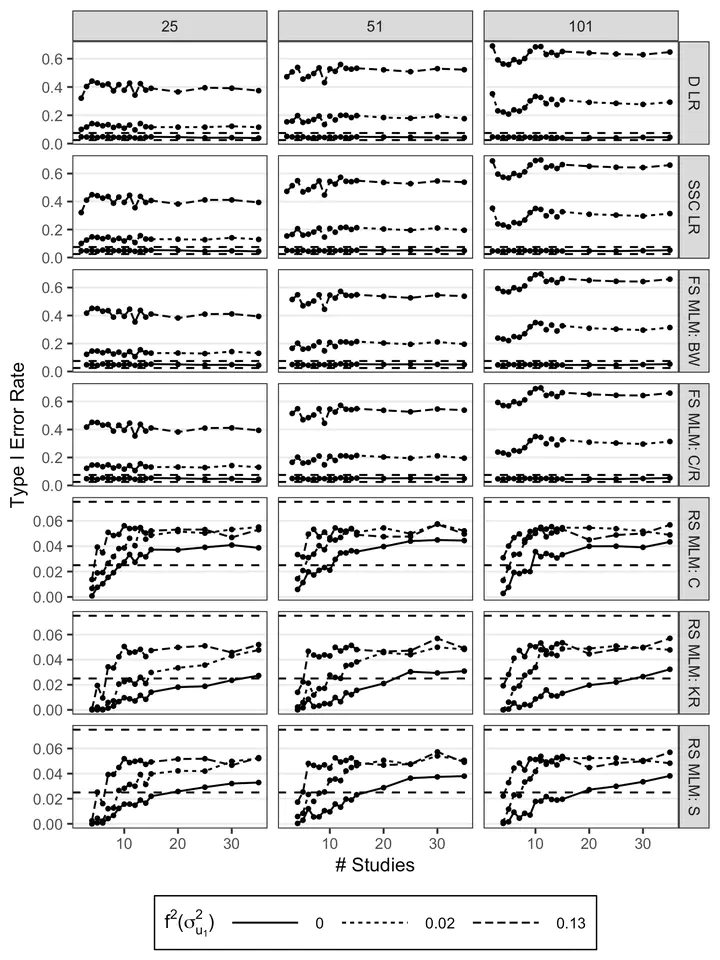Modeling approaches for cross-sectional integrative data analysis: Evaluations and recommendations
 Type I error rate for the average participant-level fixed effect, $\gamma_W$, for each model (rows) as a function of the number of studies, the average study sample size (columns), and the effect size of the slope variance $f^2\left(\sigma^2_{u_1}\right)$. Horizontal dashed lines represent upper (0.075) and lower (0.025) bounds for acceptable Type I error rate. D LR = disaggregated linear regression; SSC LR = study-specific coefficients linear regression; FS MLM = fixed-slope MLM; RS MLM = random-slopes MLM; BW = between-within; C/R = containment/residual; KR = Kenward-Roger; S = Satterthwaite.
Type I error rate for the average participant-level fixed effect, $\gamma_W$, for each model (rows) as a function of the number of studies, the average study sample size (columns), and the effect size of the slope variance $f^2\left(\sigma^2_{u_1}\right)$. Horizontal dashed lines represent upper (0.075) and lower (0.025) bounds for acceptable Type I error rate. D LR = disaggregated linear regression; SSC LR = study-specific coefficients linear regression; FS MLM = fixed-slope MLM; RS MLM = random-slopes MLM; BW = between-within; C/R = containment/residual; KR = Kenward-Roger; S = Satterthwaite.Abstract
Integrative data analysis (IDA) jointly models participant-level data from multiple studies. In psychology, IDA has been conducted using different fixed-effects and multilevel modeling (MLM) approaches. However, evaluations regarding the performance of these models in an IDA context are limited. The goal of this article is to evaluate three fixed-effects models (aggregated vs. disaggregated vs. study-specific coefficients regressions) and two MLMs (fixed-slope vs. random-slopes MLM) for cross-sectional IDA. Using a simulation study with study sample sizes and numbers of studies consistent with applied IDA (e.g., 2–35 studies), we evaluated estimation bias and Type I error rates for participant-level and study-level effects and variance components for these models; for the MLMs, we evaluated different estimation methods (i.e., constrained vs. unconstrained variance estimation and five degrees of freedom methods). Disaggregated and study-specific coefficients regressions and both MLMs yielded fixed effects estimates with ignorable bias, but only the random-slopes MLM fully modeled between-study heterogeneity and, consequently, provided well-controlled Type I error rates for testing both fixed effects. Overall, we found that MLMs could be feasible under IDA conditions with three to six studies and well-chosen estimation methods. A real-data IDA example is used to illustrate and compare the application of the five models. We hope our results will help researchers choose appropriate modeling methods when conducting IDA.